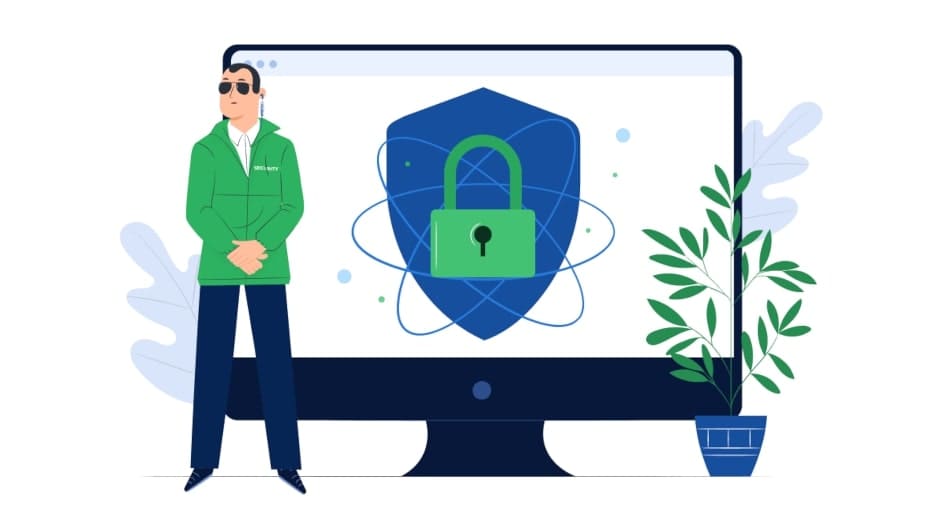What is WAF?
If you’re wondering what a Web Application Firewall (WAF) actually is—think of it as a smart filter that inspects and blocks suspicious HTTP traffic before it ever reaches your website or app. It adds a crucial layer of protection for web apps—focused on threats that slip past traditional firewalls.
Contents:
- Meaning and Definition of WAF
- How it Works
- WAF Types
- WAF vs. IDS/IPS
- What Attacks Does WAF Protect Against?
Meaning and Definition of WAF
A Web Application Firewall (WAF) helps protect web applications by filtering and monitoring traffic between the application and the Internet.
It operates at Layer 7 of the OSI model (the Application Layer), which means it’s not designed to block every type of cyberattack—but it excels at mitigating threats specifically targeting web apps.
Typically, a WAF is positioned in front of a web application, acting as a shield between the app and incoming traffic. Unlike a regular proxy, which protects clients, a WAF functions as a reverse proxy—inspecting client requests and protecting server-side data before granting access to the application.
WAFs are most effective when used as part of a broader security stack, working alongside other tools to create a comprehensive defense strategy.

How WAF Works
A WAF operates using a dynamic set of rules that inspect incoming HTTP traffic and determine whether to allow, block, or flag a request. These rules target known vulnerabilities in applications and are especially valued for their flexibility and speed of modification, allowing security teams to quickly respond to evolving attack vectors.
Since a WAF works at the application layer, it analyzes structured data such as URLs, headers, cookies, and payload content—not raw packets. This inspection typically happens after SSL/TLS decryption, allowing the WAF to fully evaluate the request and even the server’s response.
One of the WAF’s strengths lies in how quickly its rules can be updated. Security teams can adjust filters in real time to respond to emerging threats, making WAFs highly adaptable to fast-changing attack vectors.
WAF Types
Choosing a Web Application Firewall (WAF) typically depends on a company’s security requirements, the architecture of the web application, and available budget. WAFs are typically classified into three main categories:
1. By Deployment Type:
- Cloud-based WAF: A hosted SaaS solution, ideal for scalability and ease of use—especially popular for startups or VPS WAF setups.
- On-premises WAF: A hardware or software solution deployed within an organization’s infrastructure.
- Hybrid WAF: A combination of cloud-based and on-premises approaches, offering both flexibility and control.
2. By Detection Method:
- Signature-based: Detects and blocks known threats using a database of predefined attack patterns (e.g., SQLi, XSS).
- Behavior-based (Anomaly Detection): Uses AI/ML to identify deviations from normal traffic behavior.
- Whitelist-based (Positive Security Model): Allows only pre-approved and known-good requests.
- Blacklist-based (Negative Security Model): Blocks known malicious requests based on predefined blacklists.
3. By Traffic Handling Mode:
- Reverse Proxy Mode: Such WAF acts as an intermediary server between the client and the web application, inspecting and filtering traffic before forwarding it to the application.
- Transparent (Bridge) Mode: Deployed inline without changing IP addresses, making it invisible to users and systems.
- Out-of-Band (Monitoring) Mode: Passively monitors traffic without actively blocking requests.
WAF vs. IDS/IPS: Key Differences
A WAF operates based on rules specifically designed for web applications, whereas IDS/IPS systems analyze a broader range of data—including traffic at the network infrastructure level.
Unlike IDS/IPS tools, a WAF focuses more on inspecting structured content—such as JSON, XML, and form data—commonly used in web applications. Another key difference is that WAFs don’t just look for anomalies—they also verify the legitimacy of traffic. In contrast, IDS/IPS tools are primarily designed to flag signs of potentially dangerous requests.

Encryption handling also differs between the two. WAFs are typically deployed after decryption, enabling full access to HTTP request and response content. IDS/IPS solutions, however, may not inspect encrypted traffic unless specifically configured to do so—which means they could miss some web application-level attacks.
On the other hand, IDS/IPS tools support wider signature sets and can detect threats that WAFs cannot, such as IP fragmentation attacks or protocol-level exploits. WAFs focus only on web-layer protocols and can’t detect low-level network attacks.
In the end, WAF and IDS/IPS are covering different layers of your infrastructure. In some cases, both will detect an attack. However, some threats may still go undetected by one of the systems. Certain attacks can be identified only by a WAF, while others may be caught exclusively by IDS/IPS. That’s why combining WAF and IDS/IPS as part of a layered defense strategy is often the smartest move.
What Attacks Does a WAF Protect Against?
A WAF is a powerful tool for defending against a wide range of threats. It protects web applications from attacks such as SQL injection, cross-site scripting (XSS), and many other common vulnerabilities.
WAFs are also widely used for bot protection. Bots remain a serious threat for many companies—they generate over 20% of global internet traffic, overload application servers, scan for vulnerabilities, scrape content, and more. With the right WAF, you can stop harmful bots without blocking real customers—ensuring both security and seamless user experience.
Learn more in our article: The Most Common Attacks a WAF Can Prevent.
Discover the capabilities of StormWall’s enterprise-grade WAF.




















